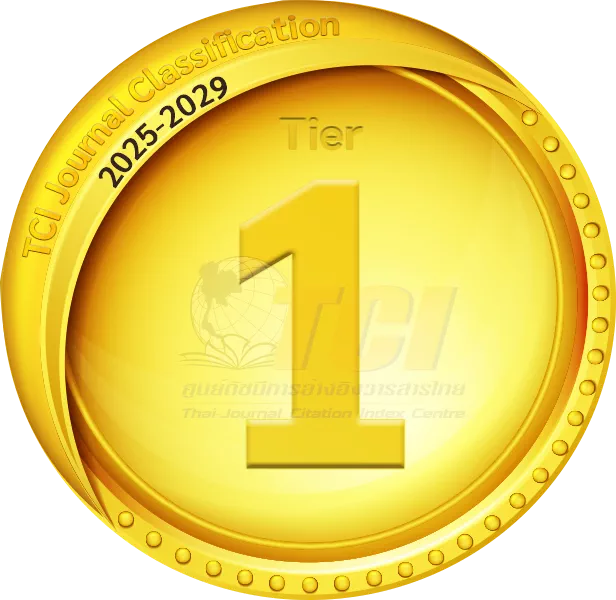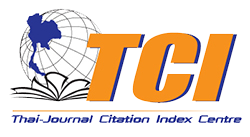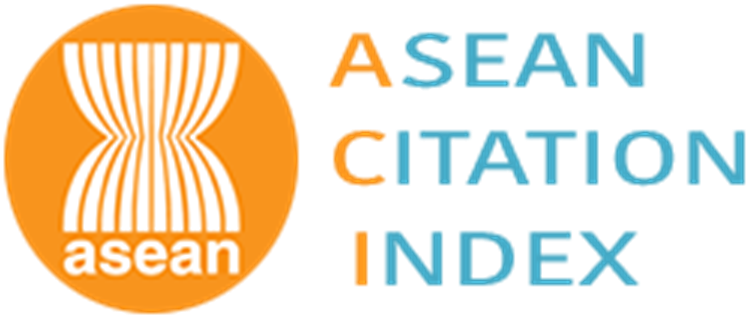เทคนิคการสำรวจด้วยภาพถ่ายระยะใกล้สำหรับงานสถาปัตยกรรมไทย กรณีศึกษา มณฑปพระพุทธสิหิงค์ มหาวิทยาลัยเทคโนโลยีราชมงคลกรุงเทพ
The Close Range Photogrammetry Technique for Thai-architecture: A Case Study Sihing Buddha Statue Mandapa at RMUTK
Abstract
จากปัญหาการสร้างแบบจำลองสามมิติด้วยเทคนิคการสำรวจด้วยภาพถ่ายระยะใกล้เชิงเลขของสถาปัตยกรรมไทยที่มีรายละเอียดซับซ้อนไม่สามารถใช้เพียงอุปกรณ์ชนิดใดชนิดหนึ่งได้เนื่องจากเซนเซอร์แต่ละชนิดให้มุมมองและความละเอียดที่แตกต่างกันเพื่อปรับปรุงคุณภาพของแบบจำลองสามมิติให้สมบูรณ์ยิ่งขึ้น งานวิจัยนี้มีวัตถุประสงค์ในการศึกษาเทคนิคการสำรวจด้วยภาพถ่ายระยะใกล้เชิงเลขเพื่อการบูรณาการข้อมูลภาพถ่ายจากเซนเซอร์ 3 ประเภท ประกอบด้วย 1) ภาพถ่ายจาก DJI Mavic 3 Classic โดยการบินวนเป็นวงกลมรอบมณฑป (POI) ที่ระดับความสูงที่ต่างกัน 6 ระดับ 2) บันทึกข้อมูลภาพถ่ายด้วย Canon DSLR เลนส์คงที่ 20 มม. ภายในพื้นที่ส่วนพระพุทธสิหิงค์และรายละเอียดภายในมณฑป และ 3) บันทึกข้อมูลภาพถ่ายด้วยสมาร์ทโฟนในส่วนของรายละเอียดบันได การประมวลผลบล็อกลำแสงของภาพถ่ายทั้งหมด แบ่งจากเซนเซอร์ 3 ประเภท เป็น 4 บล็อกลำแสง การบูรณาการเพื่อประมวลผลบล็อกลำแสงภาพถ่ายร่วมกันด้วยเงื่อนไขการกำหนดจุดรังวัดร่วม และจุดควบคุมภาพถ่าย โดยปัจจัยการกระจายตัวของจุดรังวัดร่วมมีผลต่อการทับซ้อนและการเรียงตัวของบล็อกลำแสง ผลลัพธ์การสร้างแบบจำลองสามมิติของมณฑปพระพุทธสิหิงค์ที่สร้างมีสีพื้นผิว รูปร่าง ตำแหน่งของวัตถุ มีความแม่นยำและรายละเอียดสมบูรณ์ แสดงให้เห็นว่าการบูรณาการเซนเซอร์สามารถปรับปรุงข้อจำกัดของการใช้เซนเซอร์เพียง 1 ชนิดซึ่งเหมาะสมสำหรับงานทางสถาปัตยกรรมไทย
The challenge of generating three-dimensional models using digital close range photogrammetry technique in Thai architecture, characterized by intricate features, necessitates the usage of many equipment types, as each sensor offers distinct perspectives and resolutions. To enhance the comprehensiveness of the 3D model, the aim of this research was to investigate a digital close range photogrammetry method for amalgamating photographic data from three sensor types: 1) images captured by the DJI Mavic 3 Classic while orbiting the point of interest at six distinct altitudes; 2) photographic data recorded with a Canon DSLR equipped with a 20 mm fixed lens within the Buddha Sihing area and the mandap's interior; and 3) photographic data obtained with a smartphone focusing on the staircase details. Processing of all photographic bundle blocks segmented into four bundle blocks from three types of sensors. The system integrated photo bundle blocks and sets parameters for identifying manual tie points and photo control points. The distribution factor of the manual tie points influenced the overlap and alignment of bundle blocks. The outcomes of the three-dimensional modelling of the Buddha Sihing mandap encompassed a comprehensive and precise representation of color, texture, shape, and spatial positioning of things. It demonstrated that sensor integration could enhance the constraints associated with utilizing a singular sensor type, making it appropriate for Thai architectural applications.
Keywords
[1] J. Kaufman, A. E. W. Rennie, and M. Clement, “Single camera photogrammetry for reverse engineering and fabrication of ancient and modern artifacts,” Procedia CIRP, vol. 36, pp. 223–229, 2015.
[2] R. Pierdicca, “Mapping Chimu’s settle-ments for conservation purposes using UAV and close range photogrammetry. The virtualreconstruction of Palacio Tschudi, Chan Chan, Peru,” Digital Applications in Archaeology and Cultural Heritage, vol. 8, pp. 27–34, 2018.
[3] F. Carvajal-Ramírez, A. D. Navarro-Ortega, F. Agüera-Vega, P. Martínez-Carricondo, and F. Mancini, “Virtual reconstruction of damaged archaeological sites based on Unmanned Aerial Vehicle Photogramme-try and 3D modelling. Study case of a southeastern Iberia production area in the Bronze Age,” Measurement, vol. 136, pp. 225–236, 2019.
[4] N. Cavalagli, M. Gioffrè, S. Grassi, V. Gusella, C. Pepi, and G. M. Volpi, “On the accuracy of UAV photogrammetric survey for the evaluation of historic masonry structural damages,” Procedia Structural Integrity, vol. 29, pp. 165–174, 2020.
[5] Z. Liu, “Extraction and mapping of component information of ancient buildings in Huizhou based on UAV technology,” Ecological Informatics, vol. 66, pp. 101437, 2021.
[6] X. Kong and R. G. Hucks, “Preserving our heritage: A photogrammetry-based digital twin framework for monitoring deteriorations of historic structures,” Automation in Construction, vol. 152, pp. 104928, 2023.
[7] D. Chapinal-Heras, C. Díaz-Sánchez, N. Gómez- García, S. España-Chamorro, L. Pagola-Sánchez, M. Parada López de Corselas, and M. Elías Rey-Álvarez Zafiria, “Photogrammetry, 3D modelling and printing: The creation of a collection of archaeological and epigrap-hical materials at the university,” Digital Applications in Archaeology and Cultural Heritage, vol. 33, pp. e00341, 2024.
[8] G. Fioretti, C. Campobasso, and S. Capo-torto, “Digital photogrammetry as tool for mensiochronological analysis: The case of st. Maria Veterana archaeological site (Triggiano, Italy),” Digital Applications in Archaeology and Cultural Heritage, vol. 19, pp. e00158, 2020.
[9] D. Mathakullachat, “Engineering maps must declare their accuracy and uav is not a magic tool,” Engineering Journal of Research and Development, vol. 34, no. 2, pp. 39–51, 2023 (in Thai).
[10] M. V. Vavulin, K. V. Chugunov, O. V. Zaitce-va, E. V. Vodyasov, and A. A. Pushkarev, “UAV-based photogrammetry: Assessing the application potential and effective-ness for archaeological monitoring and surveying in the research on the ‘valley of the kings’ (Tuva, Russia),” Digital Applications in Archaeology and Cultural Heritage, vol. 20, pp. e00172, 2021.
[11] J. M. Vilbig, V. Sagan, and C. Bodine, “Archaeological surveying with airborne LiDAR and UAV photogrammetry: A comparative analysis at Cahokia Mounds,” Journal of Archaeological Science: Reports, vol. 33, pp. 102509, 2020.
[12] W. Yu, H. Huang, Q. Liu, and J. Wang, “Integrating physical model and image simulations to correct topographic effects on surface reflectance,” ISPRS Journal of Photogrammetry and Remote Sensing, vol. 211, pp. 356–371, 2024.
[13] Li, Jun, Shangwei Guo, Luhan Wang, and Shaokun Han, “CompleteDT: Point cloud completion with information-perception transformers,” Neurocomputing, vol. 592, pp. 127790, 2024.
[14] P. Thong-in, P. Klungboonkrong, C. Waisurasingha, P. Punrattanasin, and C. Waisurasingha,”Use of terrestrial photogrammetry together with structure from motion technique for Architectural heritage of ayutthaya-era thai temple: A case study of prasat temple,” Engineering Journal of Research and Development, vol. 33, no. 2, pp. 91–101, 2022 (in Thai).
[15] Y. Nakata, K. Iwasaki, S. Shimoda, and H. Torita, “Understanding microtopography changes in agricultural landscapes through precision assessments of digital surface models by the UAV-RTK-PPK method without ground control points,” Smart Agricultural Technology, vol. 5, pp. 100269, 2023.
[16] E. Nocerino and F. Menna, “In-camera IMU angular data for orthophoto projection in underwater photogrammetry,” ISPRS Open Journal of Photogrammetry and Remote Sensing, vol. 7, pp. 100027, 2023.
[17] A. Clinch, “Photogrammetry for the analysis of plaster technology and ancient painting techniques: A case study on painted plasters from Amarna, Egypt,” Digital Applications in Archaeology and Cultural Heritage, vol. 32, pp. e00307, 2024.
[18] N. Mohareb, A. Alsalloum, and N. Webb, “A morphological analysis of historic buildings entries using affordable photogrammetry techniques: Old Tripoli, Lebanon,” Digital Applications in Archaeology and Cultural Heritage, vol. 28, pp. e00261, 2023.
[19] A. Thanimkarn, S. Krobklang, and J. Makklang, “The application of unmanned aerial vehicle for creating 3D model database in architecture case study: Building 3 and Building 22, Architecture Program Rajamangala University of Technology Isan Nakhon Ratchasima,” Journal of Building Energy & Environment, vol. 3, no. 1, pp. 53–62, 2020 (in Thai).
DOI: 10.14416/j.kmutnb.2025.01.001
ISSN: 2985-2145





